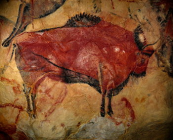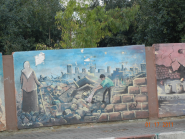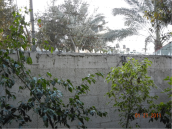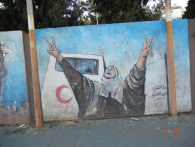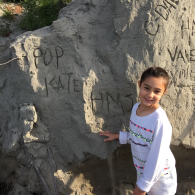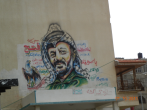Writings On Walls
Humans have been writing on walls since the beginning of time as we know it. Here are some compelling examples...
Cave Painting
Prehistoric cave wall paintings dating back to at least 40,000 years ago exist throughout both Asia and Europe. Cave paintings often depict animals, but other images such as handprints have also been discovered. The Chauvet Cave in southern France is one of the best known caves with elaborate paintings. UNESCO, the UN's cultural agency, granted it World Heritage status in 2014. The exact purpose of the paintings is unknown and of considerable speculation. There are several hundred cave paintings around the world, testifying to human creativity and the desire to communicate. (Wikipedia)
Graffiti: Walls with Messages
Where there is a wall there likely is a message or graffiti. The more modern definition of graffiti is "writing or drawings scribbled, scratched, or painted illicitly on a wall or other surface in a public place" but by this definition it should be noted that "one person's graffiti is another person's message." Graffiti is a global phenomenon and distributes messages everywhere. Graffiti can be simple written words, scribes, advertisements, political messages, or elaborate wall paintings. It has existed since ancient times, with examples dating back to Ancient Egypt, Ancient Greece, and the Roman Empire. Graffiti in general denotes undesirable or illegal writing on walls but there are many walls that artists and others paint as decorations.
Walls are often used to protest the conditions that lead to the creation of walls. This is evident in recent politically motivated walls such as the Berlin Wall, the wall along the US/Mexico border and the walls surrounding Gaza and the West Bank. It is important for everyone to look closely for the messages on the walls. (Wikipedia: Graffiti, Petroglyph)
Additional information on graffiti:
- Graffiti - Wikipedia
- Indian rock drawings
- The Electronic Intifada: Writings on the walls in Gaza
- Art Crimes: The Writing on the Wall
- Free Speech Wall - CWU
Vietnam Veterans Memorial Wall
The Wall at the Vietnam Veterans Memorial, completed in 1982, list the names of over 58,000 people killed or missing in action during the US war in Vietnam. The Wall is made of a highly reflective black stone from Bangalore, India and is made up of two walls, each 246 feet 9 inches long, that start at ground level and extend downward. While the design was initially controversial, the Wall is now a very popular site, drawing over 3 million visitors per year. An important aspect of the Wall is how people interact with it. People touch and make rubbings of the names as well as leave thousands of mementos. Despite its difficult start the Wall is for some a shrine and has helped heal the pain of the Vietnam War. (Wikipedia, Wikisource)

